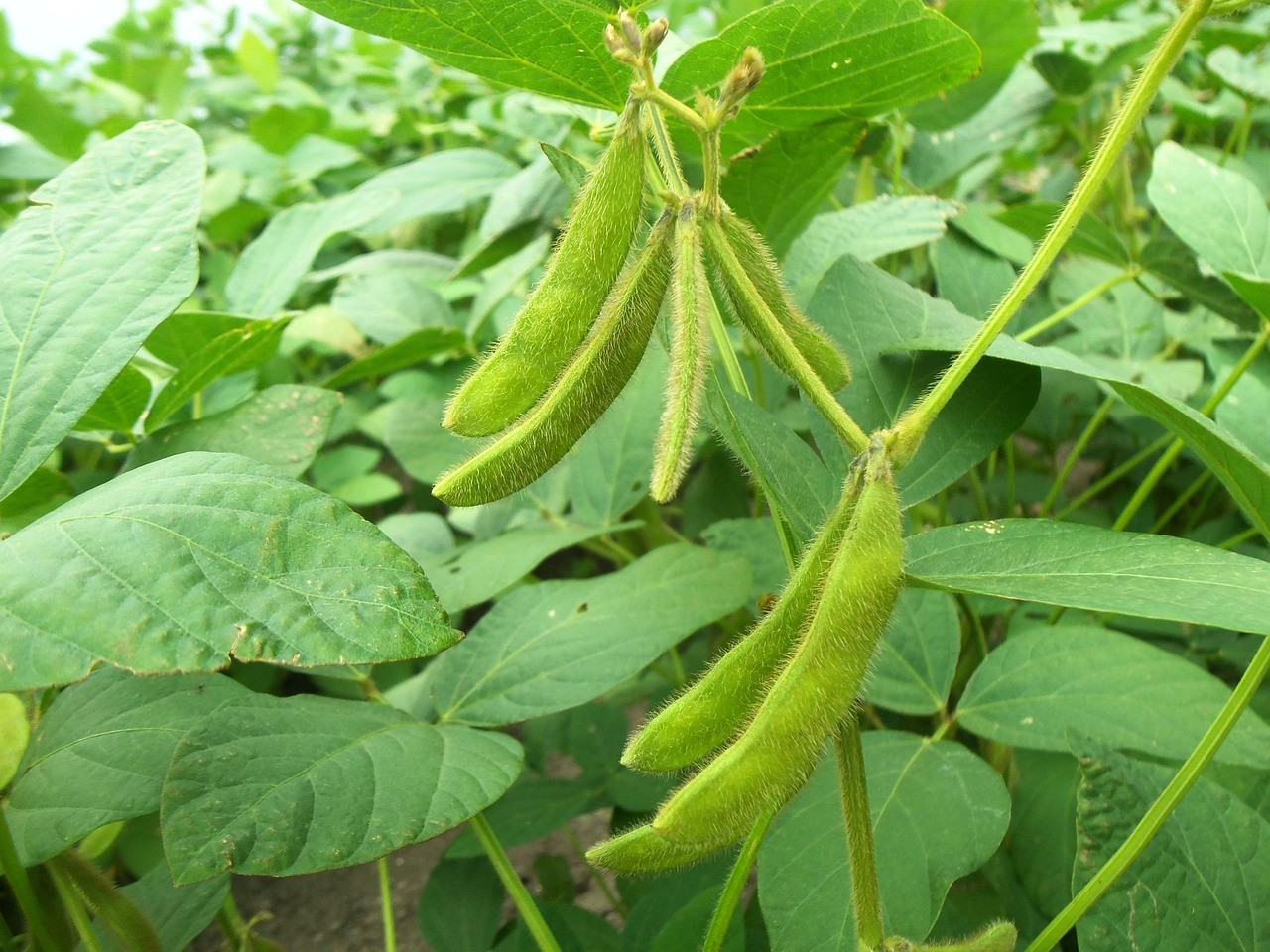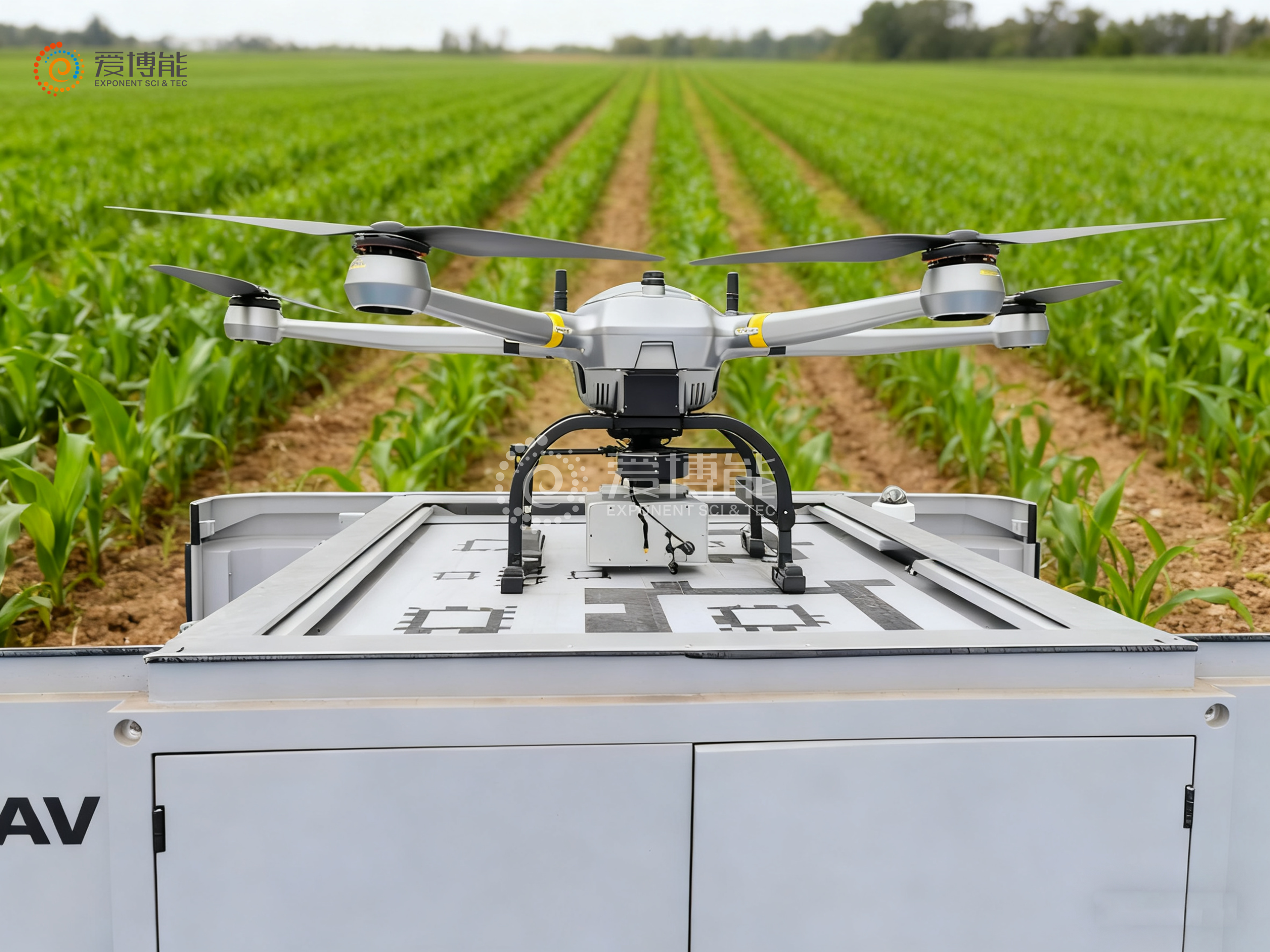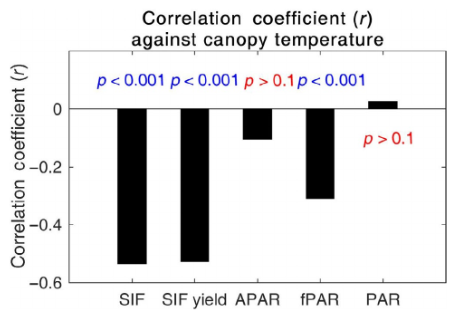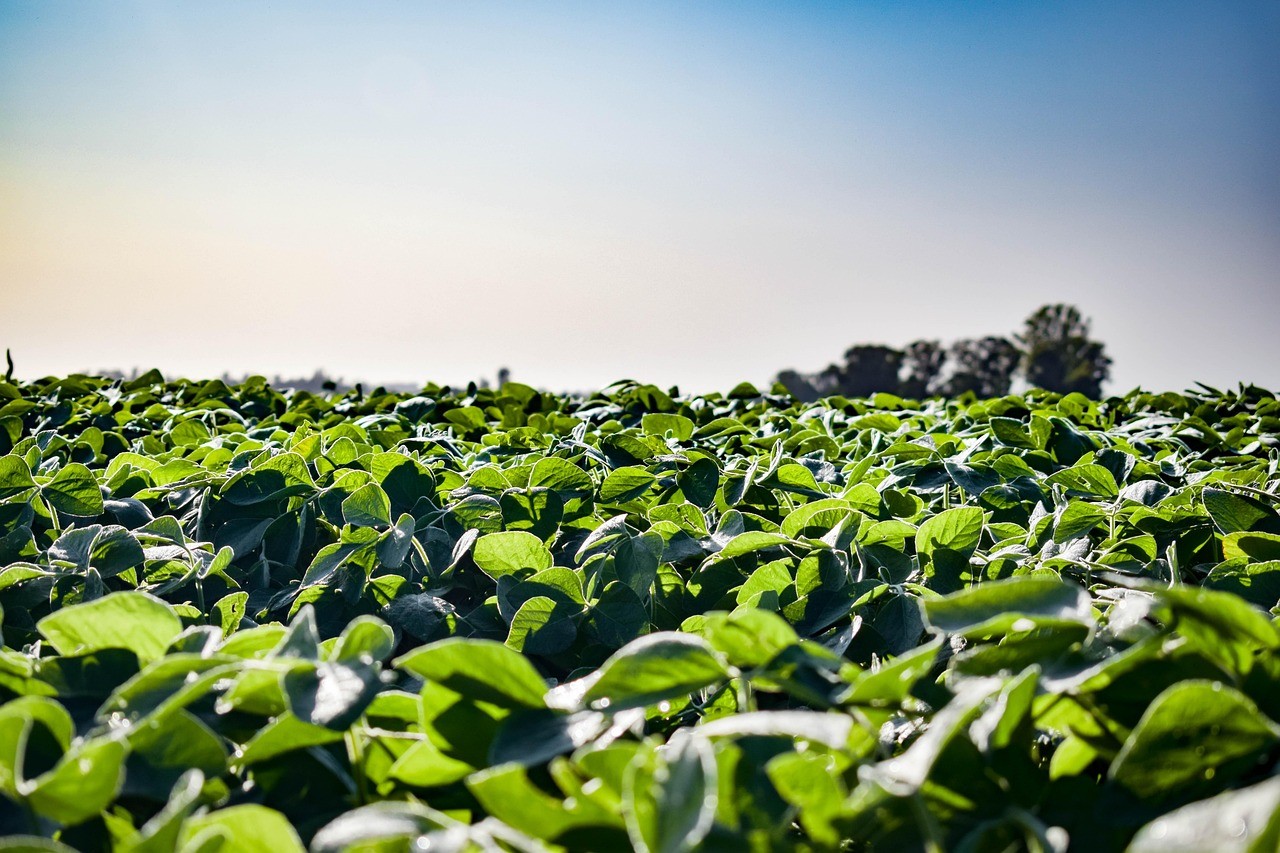
Early Detection of Soybean Yield Reduction Risk: SIF Technology Supports Stable Yield Management
在之前的文章中,我们介绍了日光诱导叶绿素荧光(SIF)的基本原理及其在森林、湿地等生态系统中的广泛应用。
本期我们将聚焦大豆这一重要作物,探讨SIF技术如何通过早期监测环境胁迫(如高温、干旱等),来预警最终的减产风险,成为保障稳产管理的关键工具。
In previous articles, we introduced the basic principles of Sun-Induced Chlorophyll Fluorescence (SIF) and its broad applications in ecosystems such as forests and wetlands.
This issue focuses on the important crop of soybean, exploring how SIF technology can serve as a key tool for ensuring stable yield management by early monitoring of environmental stresses (e.g., high temperature, drought) to warn of potential yield losses.
1. SIF与大豆光合作用的关系 / Relationship Between SIF and Soybean Photosynthesis
SIF是植物吸收太阳光后,叶绿素分子重新发射出的一小部分光能。它与光合作用初级生产力(GPP)紧密相关,被认为是评估GPP的有效替代指标。
SIF信号的产生源于光合系统II(PSII)的光化学反应,其强度受到光照强度、叶绿素含量以及光能分配途径的动态调控。研究表明,SIF与GPP之间存在显著的线性或非线性关系,这使得SIF成为监测植被光合作用的重要手段。
由于SIF与光合作用过程直接关联,当大豆遭遇环境胁迫时,其光合机构会受到影响,进而引起SIF信号的变化,这为利用SIF监测大豆的环境胁迫提供了理论基础。
SIF is a small portion of light energy re-emitted by chlorophyll molecules after plants absorb sunlight. It is closely related to Gross Primary Production (GPP) and is considered an effective proxy for assessing GPP.
The generation of SIF signals originates from the photochemical reactions of Photosystem II (PSII). Their intensity is dynamically regulated by light intensity, chlorophyll content, and the pathways of light energy allocation (photochemistry, non-photochemical quenching, and fluorescence). Research shows significant linear or nonlinear relationships between SIF and GPP, making SIF an important means for monitoring vegetation photosynthesis.
Since SIF is directly linked to the photosynthesis process, when soybeans encounter environmental stress, their photosynthetic apparatus is affected, leading to changes in SIF signals. This provides a theoretical basis for using SIF to monitor environmental stress in soybeans.

图:爱博能无人机载日光诱导叶绿素荧光监测系统,ABN-SIF-UAV。该系统通过探测日光诱导叶绿素荧光(SIF),可实现对大范围农田的无损监测,精准评估作物长势,为病虫害与水肥胁迫的早期预警提供关键数据。
ABN-SIF-UAV Unmanned Aerial Vehicle-borne Sun-Induced Chlorophyll Fluorescence Monitoring System by Exponentsci. This system detects Sun-Induced Chlorophyll Fluorescence (SIF), enabling non-destructive monitoring of large-scale farmland, accurately assessing crop growth status, and providing critical data for early warning of pests, diseases, and water/fertilizer stresses.
2. SIF在大豆环境胁迫检测中的应用 / Application of SIF in Detecting Environmental Stress in Soybeans
高温胁迫:高温及其伴随的高水汽压差通常会影响植物,但不会引起明显的冠层结构变化或光谱特征改变。SIF因其与光合作用的联系,能更好地检测这种胁迫。例如,有研究通过温度自由空气控制增强(T-FACE)实验,利用SIF量化了高温对大豆冠层光合作用的影响。大豆在高热条件下会影响比叶重、气孔密度、光合作用和叶绿素荧光参数。
High-Temperature Stress: High temperature and accompanying high vapor pressure deficit often affect plants without causing obvious changes in canopy structure or spectral characteristics. Due to its connection to photosynthesis, SIF can better detect such stress. For example, one study used the Temperature Free-Air Controlled Enhancement (T-FACE) experiment to quantify the impact of high temperature on soybean canopy photosynthesis using SIF. Under high-temperature conditions, soybeans experience changes in specific leaf weight, stomatal density, photosynthesis, and chlorophyll fluorescence parameters.

日光诱导叶绿素荧光(SIF)、SIF产额、吸收性光合有效辐射(APAR)、全冠层APAR吸收比例(fAPAR)以及光合有效辐射(PAR)与冠层温度之间的相关系数(r)。
Correlation coefficients (r) between Sun-Induced Chlorophyll Fluorescence (SIF), SIF yield, Absorbed Photosynthetically Active Radiation (APAR), fraction of whole canopy APAR (fAPAR), and PAR against canopy temperature.
臭氧胁迫:高浓度臭氧会导致大豆冠层SIF760显著下降,特别是在生长后期下降幅度更大(36%),这表明SIF能够有效捕捉臭氧对大豆冠层结构和衰老加速的影响。臭氧胁迫还会与辐射减少产生协同效应,影响大豆的叶绿素荧光特性和产量。
Ozone Stress: High ozone concentrations cause a significant decrease in soybean canopy SIF760, particularly during later growth stages (up to 36% reduction). This indicates that SIF can effectively capture ozone's impact on canopy structure and accelerated senescence in soybeans. Ozone stress also interacts with reduced radiation, affecting soybean chlorophyll fluorescence characteristics and yield.

在整个大豆生长季中观测到的冠层顶部SIF760(A)、光合有效辐射PAR(B)、绿色植被光合有效辐射吸收比例FPARgreen(C)以及表观SIF产率(D)的测量结果,分别对应生长在环境臭氧浓度(白色条形)与升高臭氧浓度(灰色条形)条件下的大豆。*代表差异显著(P<0.05)。
Measured top-of-canopy SIF760 (A), PAR (B), FPARgreen (C), and apparent SIF yield (D) throughout the growing season in soybeans grown under ambient O₃ (white bars) and elevated O₃ (grey bars). * indicates significant differences between treatments at each measurement date (P < 0.05).
其他胁迫 / Other Stresses:
缺水会迫使气孔关闭,从而抑制光合作用和蒸腾作用。这一过程会引起非光化学猝灭和光合电子传递的变化,而SIF信号对这些微小的变化非常敏感。
双酚A(BPA)作为一种环境内分泌干扰物,对大豆幼苗的生长、光合作用和叶绿素荧光参数(如初始荧光、最大光化学效率、PSII有效量子产率和光合电子传递速率)有显著影响,SIF技术可以检测这些变化。
Water Deficit: Water shortage forces stomatal closure, thereby inhibiting photosynthesis and transpiration. This process induces changes in non-photochemical quenching and photosynthetic electron transport, to which SIF signals are highly sensitive.
Bisphenol A (BPA): As an environmental endocrine disruptor, BPA significantly affects the growth, photosynthesis, and chlorophyll fluorescence parameters (such as initial fluorescence, maximum photochemical efficiency, effective quantum yield of PSII, and photosynthetic electron transport rate) of soybean seedlings. SIF technology can detect these changes.

日光诱导叶绿素荧光(SIF)技术通过捕捉与光合作用机理直接相关的光信号,为大豆的环境胁迫监测提供了一种直接、非侵入性的方法。利用这项技术,我们能够更及时地掌握作物的健康状况,为精准农业管理和保障作物稳产提供重要的技术支撑。
Sun-Induced Chlorophyll Fluorescence (SIF) technology provides a direct, non-invasive method for monitoring environmental stress in soybeans by capturing light signals directly linked to the mechanism of photosynthesis. Utilizing this technology enables more timely assessment of crop health, offering important technical support for precision agriculture management and ensuring stable crop yields.
案例来源 / Sources:
1. KQuantifying high‐temperature stress on soybean canopy photosynthesis: The unique role of sun‐induced chlorophyll fluorescence. (2021)
2. Quantifying high-temperature stress on canopy photosynthesis at the Temperature Free-Air Controlled Enhancement (T-FACE) experiment: the unique role of sun-induced chlorophyll fluorescence in capturing plant physiological stress. (2020)
3. Solar-induced chlorophyll fluorescence captures the effects of elevated ozone on canopy structure and acceleration of senescence in soybean. (2023)
4. Effects of bisphenol A on growth, photosynthesis and chlorophyll fluorescence in above-ground organs of soybean seedlings. (2013)
上一篇:没有了
 客服热线:400-688-7769
客服热线:400-688-7769 邮箱:market@exponentsci.com
邮箱:market@exponentsci.com 固话:020-89858550
固话:020-89858550 地址:广州市天河区广汕二路602号惠诚大厦B座403房
地址:广州市天河区广汕二路602号惠诚大厦B座403房
扫一扫 微信咨询
©2025 爱博能(广州)科学技术有限公司 版权所有 备案号:粤ICP备20046466号 技术支持:化工仪器网 Sitemap.xml 总访问量:88814 管理登陆